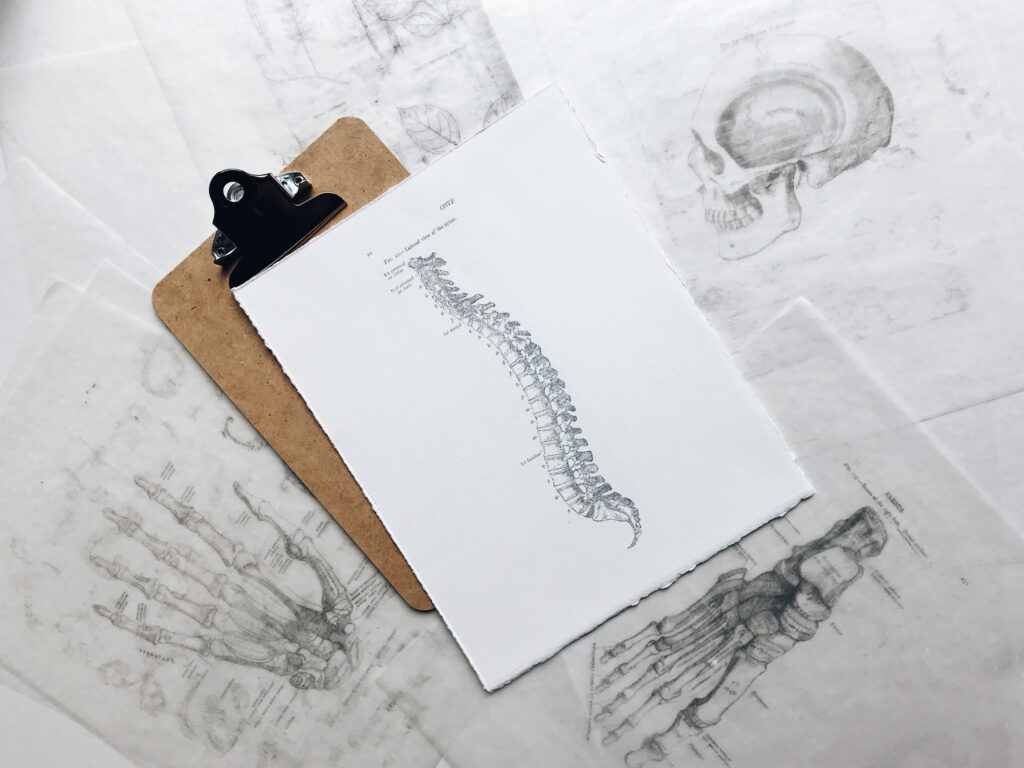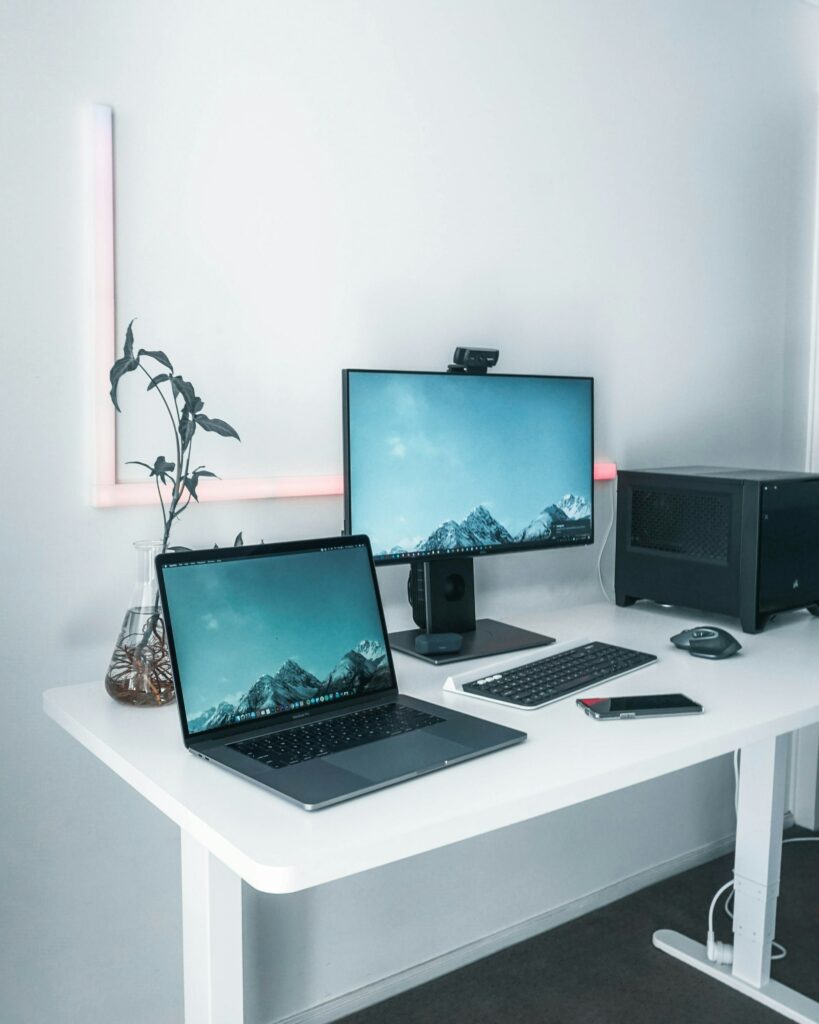

Are Standing Desks Good for You? Unraveling the Standing Desk Debate

As Seen On
Welcome to the ever-evolving world of workplace ergonomics! I’m your guide from CJ&CO, a Gold Coast Digital Marketing Agency, and today we’re diving into a topic that’s standing tall in office discussions: Are standing desks good for you? Grab a cup of your favourite brew, and let’s embark on this enlightening journey.

Are Standing Desks Good for You: A Leg Up on Health
The Sit-Stand Paradigm
Picture this: It’s another day at the office, and you’re glued to your chair, barely moving. Sounds familiar? This is where standing desks step in. An Australian study reviewing workplace interventions found that sit-stand desks initially reduced sitting time by about 100 minutes a day, dwindling to 57 minutes a few months later. Not too shabby, right? But wait, there’s more.
The Calorie Conundrum
Continuing our journey in understanding the effects of standing desks, let’s delve into the calorie-burning aspect. Standing does burn more calories than sitting, but the difference might be less than what you’d expect. A study from the Mayo Clinic found that standing instead of sitting for six hours a day could burn an additional 54 calories. Over a year, this could translate to a weight loss of around 5.5 pounds, assuming no increase in food intake.
However, the calorie burn from standing seems quite modest compared to more active behaviours like walking. MedlinePlus indicates that for a 170-pound person, an hour of standing burns about 186 calories, compared to 139 calories for sitting. This difference is notably less than the calories burned while walking, approximately 324 calories per hour at a moderate pace and even more at a brisk pace (371 calories).
The takeaway is that while standing desks offer a caloric advantage over sitting, they are not a significant tool for weight loss compared to more vigorous activities like walking. Standing desks should be viewed as one component of an active lifestyle rather than a standalone solution for weight loss or health improvements. The emphasis should be on integrating various forms of physical activity throughout the day for overall health benefits.
Posture and Pain: The Unseen Perks

Standing desks is a boon for your posture and may help alleviate that persistent back pain. The key lies in ergonomics and how you use your standing desk.
Improved Posture
One of the major benefits of a standing desk is the promotion of better posture. Traditional desks often lead to slouching and poor ergonomic setups, exacerbating back and neck issues. On the other hand, standing desks can be adjusted to suit your height, ensuring that your workstation is ergonomically aligned with your body. This alignment encourages a more natural posture, helping to reduce the strain on your back and neck muscles.
Back Pain Alleviation
A standing desk can also be a valuable tool in alleviating back pain, especially for those with sedentary jobs. By allowing you to alternate between sitting and standing, these desks help reduce the pressure on your lower back and neck.
However, it’s important to note that standing desks are not cure-alls, especially for more severe back issues like scoliosis or a bulging disc. They are part of a broader approach to managing back pain, which includes proper posture, regular movement, and appropriate medical care for chronic conditions.
Usage Tips for Maximum Benefit
To get the most out of your standing desk and improve your posture and back health, consider the following tips:
- Adjust the Desk Height: Ensure your standing desk is at an appropriate height, aligning your head, neck, and spine. Your wrists should rest flat on the desk with your elbows at a 90-degree angle, and your computer monitor should be at or just below eye level.
- Ease into It: Gradually transition to using a standing desk. Start with short periods of standing and progressively increase your standing time, allowing your body to adjust.
- Foot Care: Standing for long periods, especially on hard surfaces, can be tough on your feet. Wear supportive shoes and consider using an anti-fatigue mat to reduce soreness in your feet and legs.
- Movement is Key: Vary your position between standing, walking, and sitting. Regular movement is important to prevent stiffness and maintain good circulation.
Standing desks offer a range of health benefits, from improved posture to potential reductions in back pain.
However, using them correctly and in conjunction with other healthy habits, like regular movement and proper sitting posture, is crucial to reap their benefits fully. If you have persistent back or neck pain, consulting a healthcare provider is essential to determine the underlying causes and appropriate treatment.
But… Are There Any Downsides?

Like all good things, standing desks come with a word of caution. While they offer a range of benefits, certain downsides should be noticed. One of the most common issues with prolonged standing is discomfort, which can manifest as muscle fatigue, especially in the lower back, legs, and feet.
This discomfort may hinder your ability to concentrate and perform tasks effectively. Standing for extended periods can also lead to foot conditions like plantar fasciitis, so wearing supportive footwear and using anti-fatigue mats is recommended. Also, maintaining proper standing posture can be challenging, potentially leading to strain on the neck, shoulders, and lower back.
Another disadvantage is the potential for discomfort due to the lack of adjustability in some standing desks. Limited height settings and fixed keyboard and monitor placements can lead to awkward postures and strain on various body parts. It, in turn, can impact productivity and overall well-being. Choosing a standing desk that offers sufficient ergonomic options and adjustability to suit your specific needsis important.
Moreover, standing desks, while helpful, can be a bit costly. They range from a few hundred to several thousand dollars. However, weighing this initial investment against the long-term health and productivity benefits it can provide is essential. In addition to the financial aspect, your work environment’s physical space and design should also be considered. Standing desks generally require more space than traditional desks, especially if you opt for a larger, adjustable model.
Lastly, there’s a learning curve associated with using standing desks. Adapting to the new setup requires adjustments in posture and may take some time for your body to get used to standing for extended periods. The correct setup of the desk and monitor and choosing the right footwear play a crucial role in maximizing the benefits of a standing desk while minimizing discomfort.
Frequently Asked Questions:
Do standing desks help with weight loss?
Not significantly. Standing burns more calories than sitting, but the difference is marginal. Regular physical activity is still king.
Can standing desks improve posture?
Yes, if used correctly with proper ergonomics.
Should I stand all day at my standing desk?
No. Balance is key. Mix standing with sitting and walking.
Wrapping It Up: To Stand or Not to Stand?
So, are standing desks the magic bullet for our sedentary lifestyles? Not quite. They’re a tool, a very useful one, but not a standalone solution. Mix it up, keep moving, and maybe even throw in a seated exercise or two. So, the answer to the question, “Are standing desks good for you?”. They are definitely, but they come with a learning curve, just like everything else.
Konger
Up until working with Casey, we had only had poor to mediocre experiences outsourcing work to agencies. Casey & the team at CJ&CO are the exception to the rule.
Communication was beyond great, his understanding of our vision was phenomenal, and instead of needing babysitting like the other agencies we worked with, he was not only completely dependable but also gave us sound suggestions on how to get better results, at the risk of us not needing him for the initial job we requested (absolute gem).
This has truly been the first time we worked with someone outside of our business that quickly grasped our vision, and that I could completely forget about and would still deliver above expectations.
I honestly can’t wait to work in many more projects together!
Disclaimer
*The information this blog provides is for general informational purposes only and is not intended as financial or professional advice. The information may not reflect current developments and may be changed or updated without notice. Any opinions expressed on this blog are the author’s own and do not necessarily reflect the views of the author’s employer or any other organization. You should not act or rely on any information contained in this blog without first seeking the advice of a professional. No representation or warranty, express or implied, is made as to the accuracy or completeness of the information contained in this blog. The author and affiliated parties assume no liability for any errors or omissions.

